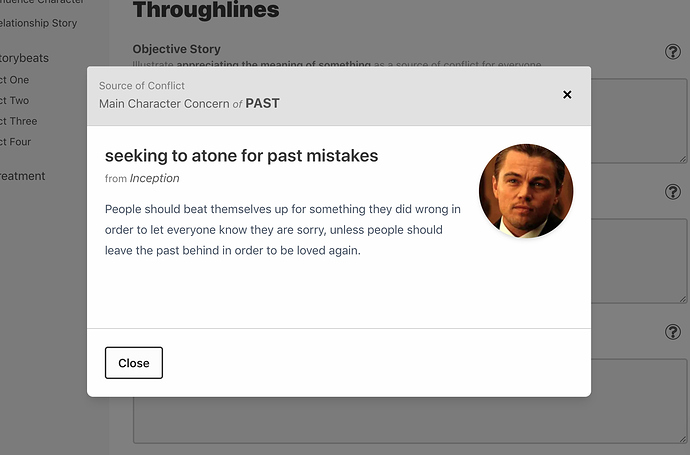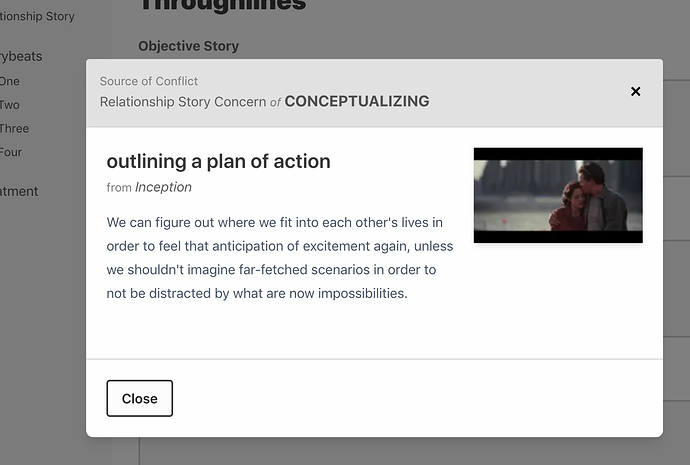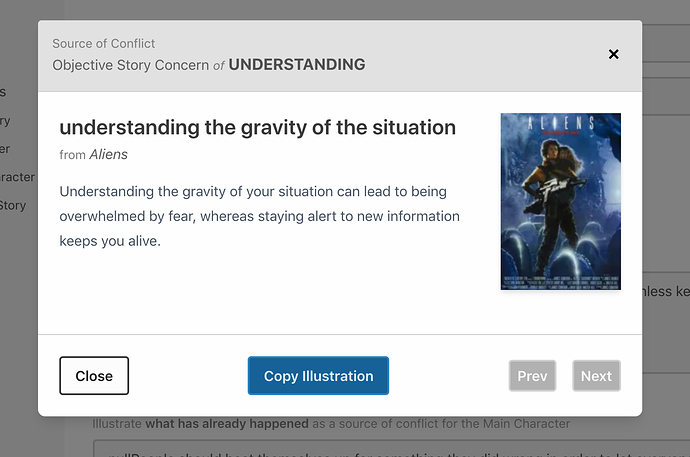Looking for some feedback on this new initiative throughout Subtext:
Instead of just a block of text describing a Main Character’s rendezvous with a Storypoint (a Main Character Concern of Past here), I’m going to go through and present inequities to help writers understand how to write Appreciations as processes of conflict (Methods) and to get away from the idea that the characters are somewhat “aware” of these things.
My question is what is most helpful for you as you cycle through a bunch of examples:
- as it is above, with the classic “People can/want/need/should blah blah blah in order to blah blah blah UNLESS …”
- “Beating yourself up for something you did wrong lets other know how sorry you are, unless leaving the past behind opens you up to be loved again”
- some other variation
Open to suggestions because this is really about deciding on what is most helpful.
The idea would be to add a copy/paste button there, so when you come across something you like, you tap the button, that inequity is added to your story, and then you can make any adjustments to it that you like.






